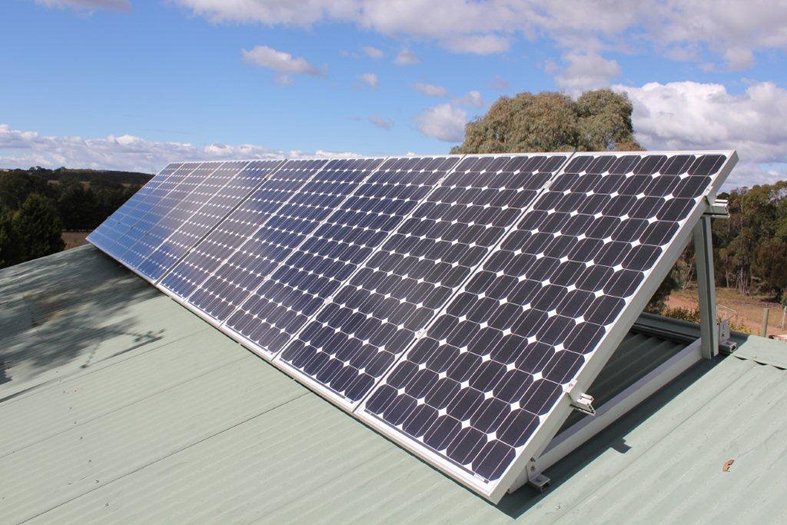Last update July 10th, 2024 at 05:19 pm
When getting a solar panel system, your solar installer may recommend you add mounting frames for tilting your solar panels. Here is everything you need to know about mounting frames, and whether they are worth investing in or not.
What is a solar panel mounting frame?
A solar panel mounting frame (also known as a mounting structure or mounting system), is a system consisting of solar panel attachment points. The system is usually made of stainless steel or aluminium and provides a robust structure that can withstand wind and rain.
How does the mounting frame work?
The main reason for using mounting frames is to provide the structure that is needed to hold the solar panels at their optimal angle. Mounting panels are very often used on flat rooftops and other places where it is difficult to mount the solar panels directly to the roof.
Does tilting solar panels work?
Yes! A solar panel mounting frame can be very useful as it will let you tilt the solar panels to a beneficial angle. The optimum solar angle is usually the same as the latitude of your home.
The more photons from the sunlight that hit the solar panels, the more efficiently the panels will work. This means that the solar panels will be able to produce more electricity than they would in a less beneficial angle.
When do you need mounting frames to tilt solar panels?
If your roof is at the wrong pitch or difficult to use as an installation base, a solar mounting frame can be a very good investment.
If you do not include a mounting frame, your solar panels will not be able to produce the same energy output because the sunlight does not hit them optimally. The more efficiently your solar panels can produce electricity, the better the return on investment will be.
You will be able to save more money due to lower electricity bills (and higher feed-in tariffs), and that way you can also achieve a shorter payback period for the solar panels.
Different types of solar panel mounting frames
There are different kinds of solar mounting frames on the market. Here we will take a closer look at three of the most common types.
1. Rooftop mounting frame
The rooftop mounting frame is commonly used among both private households and businesses that want to produce solar energy on roofs with tricky architecture. The mounting frame can make it possible to produce solar energy on flat or steep rooftops.

2. Ground mounting frame
If you need more solar panels than your roof can fit, or if the rooftop is exposed to shading from buildings or trees, a ground mounting frame can be a good choice.
A ground mounting frame makes it possible to place the solar panels next to the building, instead of on top of it. That way you might have room for more solar panels and at the same time ensure better sun exposure.

3. Mounting frames for parking canopies
Large sun-exposed areas like parking lots have a great solar energy potential. By placing solar canopies or carports in these areas, you are able to produce electricity. At the same time, you provide people (drivers) with a shaded area.
Solar mounting frames for parking lots are perfect for any business with large open spaces. These include shopping malls, airports and other industries that would like to go solar. The solar energy can be used to power everything from machines and air conditioning systems to lights.

Is a mounting frame a must?
It is up to you to decide whether you want a solar mounting frame or not. The solar installer may give you recommendations and can show you calculations of how efficiently the solar system will work with and without a mounting frame.
Based on these calculations you can make an informed decision about what solution that works best for you. Of course, if you choose a solar system with mounting frames, this may affect the costs.
How much does a solar tilt frame cost?
The extra cost for solar tilt frames will depend on a number of factors. First and foremost, the number of solar panels will be relevant. The more solar panels you have, the more tilt frames you will need.
Assuming a small 3 kW solar system consisting of 250 W panels, you will typically have around 12 solar panels. Mounting frames for a system like this will normally cost around $300.
Remember that the solar mounting frames will pay for themselves after a couple of years due to higher solar energy production. The normal payback period for solar tilt frames is around 6 years.
Get solar price quotes from different installers, and avoid paying more than necessary for your solar system. At the same time, it is important to ensure quality; so remember to choose a CEC-accredited installer.